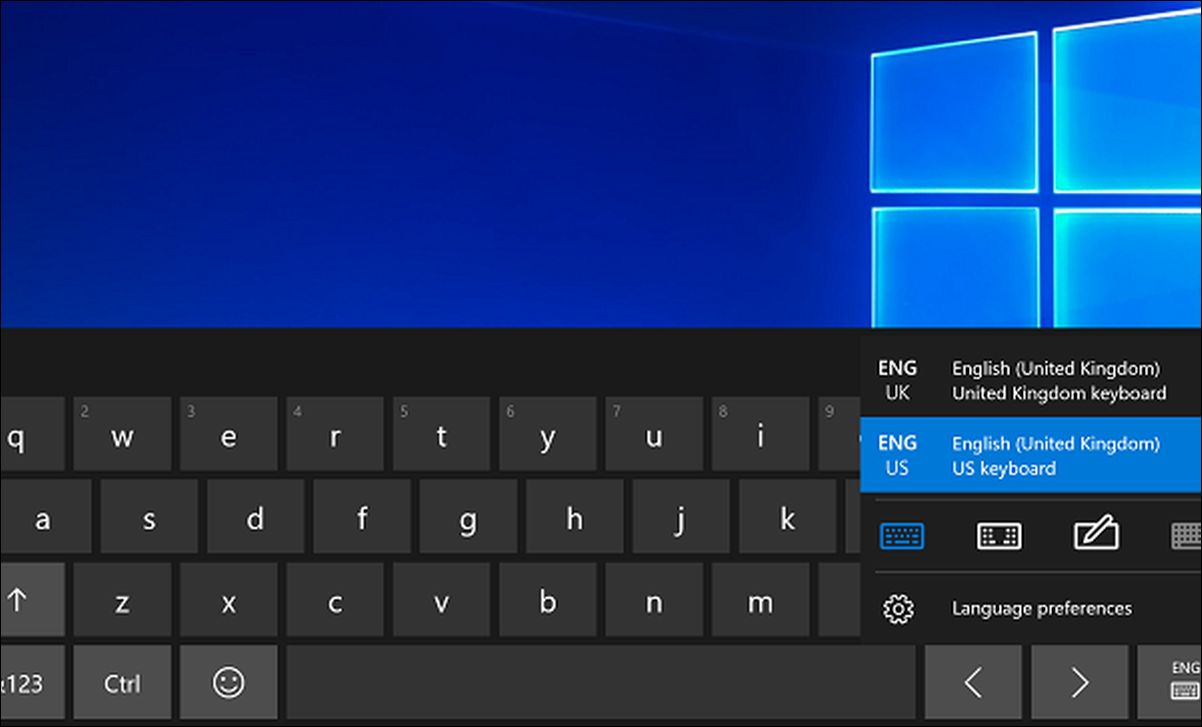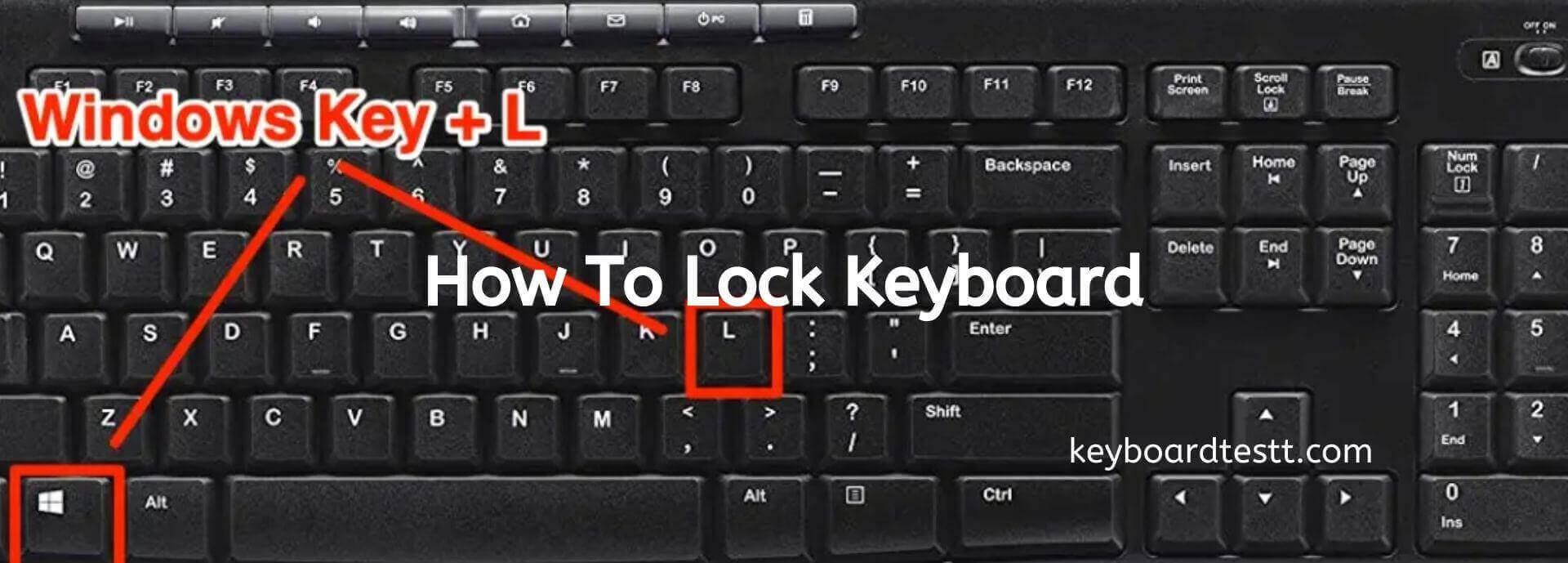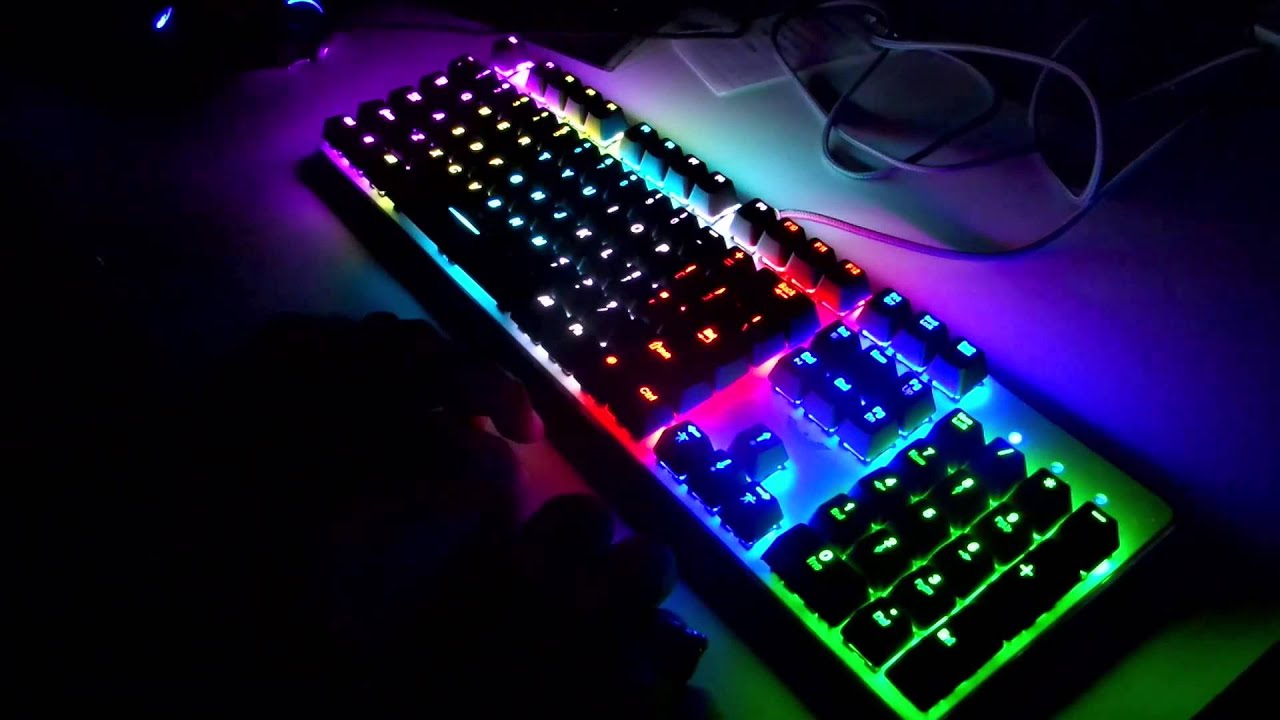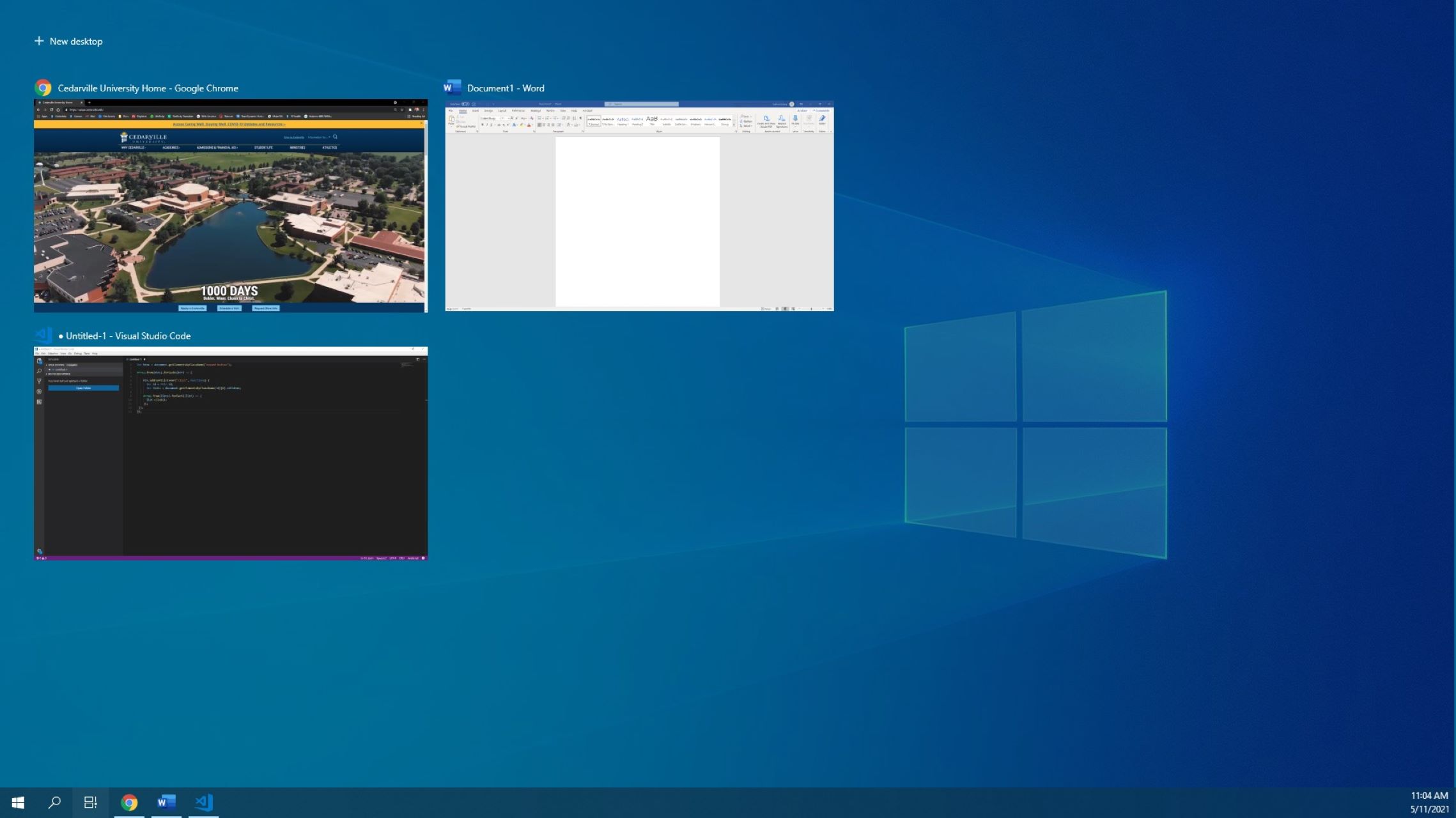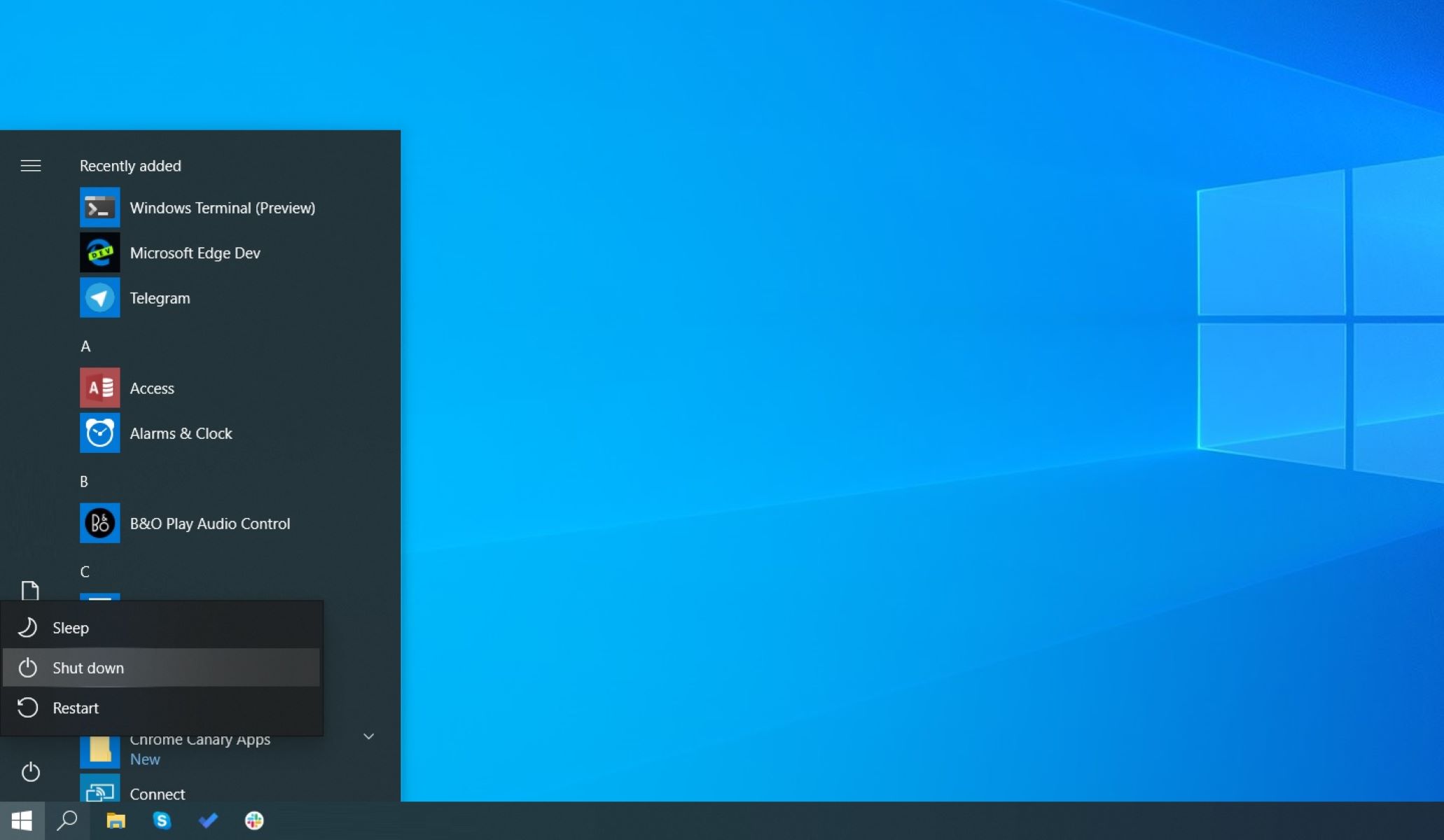Introduction
Keyboard shortcuts: the secret weapon of productivity. These handy combinations of keys can save you time, streamline your workflow, and make navigating through software and applications a breeze. Whether you’re a student, a professional, or an enthusiast, learning how to create your own keyboard shortcuts can greatly enhance your computer experience.
So, what exactly are keyboard shortcuts? In simple terms, they are a combination of two or more keys that perform a specific action within a software or application. Instead of navigating through menus and clicking on various options, you can simply press a few keys to execute a command instantly. From simple tasks like copying and pasting to complex actions like opening specific dialog boxes, keyboard shortcuts can transform the way you interact with your computer.
Now, you may be wondering, why should you create your own keyboard shortcuts? The answer is simple: customization and efficiency. By creating personalized shortcuts, you can tailor your computer experience to suit your specific needs and preferences. You can assign shortcuts to frequently-used commands, features, or actions that are not readily available through default shortcuts. This allows you to speed up your workflow, minimize repetitive mouse movements, and become more productive overall.
In this step-by-step guide, we will walk you through the process of creating your own keyboard shortcut on Windows. Although the steps may slightly vary depending on the software or application you are using, the general principles remain the same. So let’s dive in and unlock the power of personalized keyboard shortcuts!
What are keyboard shortcuts?
Keyboard shortcuts have been around for decades and have become an integral part of modern computing. They offer a more efficient and convenient way to perform various tasks on your computer. By pressing a combination of keys instead of navigating through menus and options, you can accomplish actions quickly and effortlessly.
Keyboard shortcuts can be found across all operating systems, software applications, and web browsers. They cover a wide range of functions, from basic operations like copy and paste to more complex actions like opening specific dialog boxes or executing macros. These shortcuts are designed to streamline your workflow and make your interactions with software more intuitive and seamless.
There are several benefits of using keyboard shortcuts. Firstly, they save you time. Instead of clicking through multiple menus and options, a few simple keystrokes can perform the same task. This can be a major time-saver, especially when performing repetitive actions or working on time-sensitive projects.
Secondly, keyboard shortcuts improve efficiency. By reducing your reliance on the mouse and trackpad, you can navigate through software more quickly and seamlessly. This can result in a smoother workflow and increased productivity.
Keyboard shortcuts also enhance accessibility. For users with certain physical challenges or disabilities, using a mouse or trackpad may not be convenient or easy. Keyboard shortcuts provide an alternative method of interacting with the computer, allowing for a more inclusive computing experience.
Moreover, using keyboard shortcuts can reduce strain on your hands and wrists. Constantly moving the mouse and performing repetitive clicking can lead to discomfort and even conditions like carpal tunnel syndrome. By utilizing keyboard shortcuts, you can minimize these repetitive motions and potentially prevent such issues.
Lastly, keyboard shortcuts can make you feel like a computer wizard! Mastering a set of keyboard shortcuts can make you more proficient and confident in using various software applications. With the ability to perform actions quickly, seamlessly, and without hesitation, you can impress colleagues, friends, and yourself with your tech-savvy skills!
Why create your own keyboard shortcuts?
While many software applications come with default keyboard shortcuts, creating your own personalized shortcuts can offer several advantages and improve your efficiency even further.
One of the main reasons to create your own keyboard shortcuts is customization. Every individual has unique preferences and workflows, and by creating shortcuts that align with your specific needs, you can streamline your work process. You can assign shortcuts to actions or features that you frequently use, eliminating the need to search through menus or remember complex sequences of commands.
With personalized keyboard shortcuts, you have the power to optimize your workflow and save precious time. Tasks that once took multiple clicks or menu navigations can now be accomplished with a simple key combination. This allows you to focus more on the task at hand and eliminates unnecessary distractions.
Not only do personalized shortcuts save time, but they also reduce repetitive strain on your hands and wrists. Constantly reaching for the mouse and performing repetitive clicking can lead to discomfort and potential injuries. By assigning common commands or actions to keyboard shortcuts, you can minimize the need for excessive mouse movement, promoting better ergonomics and reducing the risk of repetitive strain injuries.
Another benefit of creating your own shortcuts is consistency. If you work with multiple software applications, each may have different default shortcuts. By creating uniform shortcuts across various applications, you can maintain a consistent and familiar experience. This reduces the learning curve when switching between different software tools and allows for a more fluid and efficient workflow.
Furthermore, personalized keyboard shortcuts can enhance your productivity by reducing cognitive load. Remembering the specific location of commands within menus or memorizing complex sequences of actions can be mentally taxing. By assigning shortcuts to frequently used functions, you free up mental bandwidth and make it easier to execute commands quickly and effortlessly.
Lastly, creating your own keyboard shortcuts can provide a sense of empowerment and ownership over your computing experience. By customizing your shortcuts, you can feel in control and tailor your software to align with your preferences and work style. This level of personalization not only increases your productivity but also enhances your overall satisfaction and enjoyment when using your computer.
Step-by-step guide to creating a keyboard shortcut
Creating your own keyboard shortcut is a straightforward process that can be done in just a few simple steps. The exact process may vary slightly depending on the software or application you are using, but the general principles remain the same. Here is a step-by-step guide to help you create your own keyboard shortcut:
- Identify the software or application: Determine which software or application you want to create a shortcut for. It could be a word processor, a graphic design tool, or even a web browser.
- Find the appropriate menu or command: Identify the command or function you want to assign a keyboard shortcut to. It could be an existing command or a custom function within the software.
- Open the keyboard shortcuts settings: Look for the keyboard shortcuts settings within the software or application. It is typically found within the “Preferences,” “Options,” or “Settings” menu.
- Create a new keyboard shortcut: Once you are in the keyboard shortcuts settings, look for the option to create a new shortcut. Depending on the software, you may find a button or an edit box labeled “New Shortcut” or something similar.
- Assign a key combination: In the new shortcut dialog, you will have the option to assign a key combination or sequence. Select the keys you want to use as your shortcut. It can be a combination of letters, numbers, or even function keys.
- Test the keyboard shortcut: After creating the shortcut, make sure to test it to ensure it performs the desired action. Open the software or application and try out the shortcut you just created. If it doesn’t work as intended, you can always go back to the keyboard shortcuts settings and modify or delete the shortcut.
Remember, the steps mentioned above are general guidelines, and the process may vary depending on the software or application you are using. Some software may have more advanced options for creating shortcuts, such as assigning macros or custom scripts. Explore the documentation or help resources of the specific software or application for more detailed instructions on creating keyboard shortcuts.
#1. Identify the software or application
The first step in creating a keyboard shortcut is to identify the software or application for which you want to create the shortcut. This could be any program or tool that you frequently use and want to streamline your interactions with.
Start by determining the specific software or application you want to create a shortcut for. It could be a word processor like Microsoft Word, a design software like Adobe Photoshop, a spreadsheet program like Microsoft Excel, or even a web browser like Google Chrome. The key is to select a software or application that you use regularly and where a keyboard shortcut would significantly enhance your workflow.
Consider the tasks or actions you perform frequently within the software. Are there specific commands, functions, or features that you access repeatedly? By identifying these areas, you can pinpoint the commands that would benefit from having a personalized keyboard shortcut.
For example, in a word processor, you may frequently use commands like “Copy,” “Paste,” or “Undo.” In a design software, you may often use functions like “Rotate,” “Duplicate,” or “Group Objects.” In a web browser, you might find it useful to create a shortcut for opening a new tab or refreshing the page.
By understanding the software or application and the tasks you commonly perform within it, you can determine the areas where creating a keyboard shortcut would be most beneficial. This step sets the foundation for the subsequent steps in creating a personalized shortcut that aligns with your specific needs and improves your efficiency.
Remember, not all software or applications may support the creation of custom keyboard shortcuts. Some may have pre-defined shortcuts that cannot be modified, while others may have limited options for customization. It’s important to check the documentation or help resources of the specific software to confirm if creating keyboard shortcuts is possible and to understand any limitations or restrictions.
Now that you have identified the software or application for which you want to create a shortcut, you can move on to the next step: finding the appropriate menu or command within the software.
#2. Find the appropriate menu or command
Once you have identified the software or application for which you want to create a keyboard shortcut, the next step is to find the appropriate menu or command that you want to assign the shortcut to. This involves exploring the software’s interface and locating the specific function or action you frequently use.
Start by familiarizing yourself with the software’s menus and options. This typically includes menus like “File,” “Edit,” “View,” “Tools,” or “Preferences.” These menus often contain a variety of commands that you can access through traditional mouse-clicking or keyboard shortcuts.
Browse through the different menus and submenus to find the command or function that you want to assign a keyboard shortcut to. It could be an existing command that is already available within the software or a custom function that you have created.
For example, suppose you are using a word processing software like Microsoft Word, and you frequently use the “Spell Check” feature. In this case, you would explore the “Tools” or “Review” menu to find the appropriate command. Similarly, if you are using a graphic design software like Adobe Photoshop and often perform actions like “Crop” or “Resize,” you would look for these commands within the relevant menus.
It’s important to note that the location of commands may vary depending on the software or application you are using. Some software may have a dedicated menu for specific actions, while others may have a more streamlined interface with icons or buttons for quick access.
If you are having trouble finding the appropriate menu or command, refer to the software’s documentation or help resources. These resources often provide information on the layout of the software’s interface and the location of specific commands. Online forums, user communities, or tutorials may also be helpful in discovering hidden or advanced functions within the software.
By finding the appropriate menu or command, you are one step closer to creating your own personalized keyboard shortcut. The next step involves accessing the keyboard shortcuts settings, where you can define and assign your custom shortcut.
#3. Open the keyboard shortcuts settings
After identifying the software or application and finding the appropriate menu or command, the next step in creating a keyboard shortcut is to open the keyboard shortcuts settings. This is where you can customize and define your own shortcuts within the software’s configuration.
The keyboard shortcuts settings can usually be accessed through the software’s main menu or options menu. Look for options like “Preferences,” “Options,” “Settings,” or “Customize.” The specific terminology may vary depending on the software or application you are using.
Once you have located the keyboard shortcuts settings, open it to reveal the available options for customizing shortcuts. In some software, you may find a dedicated tab or section specifically for keyboard shortcuts. In others, the keyboard shortcuts settings may be integrated within the general preferences or options menu.
It’s worth mentioning that not all software or applications offer extensive options for customizing shortcuts. Some software may have limited customization abilities or only allow modification of a select few shortcuts. In such cases, you may have to work with the available options or explore additional plugins or extensions that offer more advanced shortcut customization.
Before proceeding further, take a moment to familiarize yourself with the interface and layout of the keyboard shortcuts settings. Depending on the software, you may see a list of existing shortcuts, categories or groups for different commands, or an empty canvas where you can start defining your own shortcuts.
Remember, the specific steps and options within the keyboard shortcuts settings may vary depending on the software or application you are using. If you’re unsure about how to access or navigate the keyboard shortcuts settings, refer to the software’s documentation or help resources for more specific instructions.
Now that you have opened the keyboard shortcuts settings, you are ready to move on to the next step: creating a new keyboard shortcut. This step involves defining the key combination for your shortcut and linking it to the desired command or function within the software.
#4. Create a new keyboard shortcut
With the keyboard shortcuts settings open, you can now proceed to create a new keyboard shortcut within the software or application. This step involves defining the key combination for your shortcut and linking it to the desired command or function.
Look for options like “New Shortcut” or “Add Shortcut” within the keyboard shortcuts settings. The specific terminology may differ depending on the software or application you are using. Click on this option to begin creating your new shortcut.
In the new shortcut dialog or interface, you will typically see fields or options to set the key combination for your shortcut. This is where you define the specific keys or key sequence that will trigger the assigned command or function.
Select the keys you want to use as the shortcut. It can be a combination of letters, numbers, special characters, or function keys. Many software allow you to assign multiple keys to create a unique and memorable shortcut. Avoid using key combinations that are already widely used or conflict with existing shortcuts within the software.
As you define the key combination, you may see a representation or visual display of the keys you have selected. This helps you ensure that you have set the desired combination correctly.
Once you have defined the key combination, it’s time to link it to the specific command or function. Depending on the software, you may have a dropdown menu, search bar, or a hierarchical list of commands or functions to choose from.
Locate and select the command or function that you want to associate with your shortcut. This is typically the command or function that you identified in the earlier steps when finding the appropriate menu or command.
Double-check that the selected command or function accurately matches your intention. This step is crucial in ensuring that the shortcut performs the desired action when triggered.
Finally, save or apply your new keyboard shortcut. Some software may require you to click a “Save” or “Apply” button, while others may automatically save the shortcut as you define it.
Congratulations! You have successfully created a new keyboard shortcut within the software or application. The next step is to test the shortcut to ensure that it performs the desired action as intended.
#5. Assign a key combination
After creating a new keyboard shortcut, the next step is to assign a key combination that will trigger the shortcut. This key combination is the sequence of keys you will press to activate the desired command or function within the software or application.
Within the keyboard shortcuts settings, locate the field or option that allows you to assign the key combination. This may be a text box, dropdown menu, or a dedicated area for key assignments.
When assigning a key combination, consider using a combination of keys that is convenient and easy to remember. It should also be a combination that will not conflict with any existing shortcuts or system-wide hotkeys.
The specific requirements and limitations for assigning key combinations can vary depending on the software or application. Some software may require you to use a specific modifier key, such as Ctrl, Alt, or Shift, in combination with other keys. Others may allow you to choose from a wide range of keys, including letters, numbers, or even function keys like F1, F2, etc.
As you select the keys for your combination, you may see a visual representation or display that shows the keys you have chosen. This helps ensure that you have set the desired key combination accurately.
It’s important to keep in mind that certain key combinations may be reserved or have special functions within the software or operating system. For example, Ctrl+C is commonly used for copying, and Ctrl+V is widely recognized as the keyboard shortcut for pasting. Avoid using key combinations that conflict with these widely accepted conventions.
Once you have assigned a key combination, take a moment to review and verify your selection. Double-check that the keys you have chosen are comfortable to press and that they are not already used for other essential functions.
Remember to save or apply your changes within the keyboard shortcuts settings to ensure that the assigned key combination is saved and activated.
Congratulations! You have now successfully assigned a key combination for your new keyboard shortcut. The next step is to test the shortcut and confirm that it performs the desired action within the software or application.
#6. Test the keyboard shortcut
After creating and assigning a key combination for your new keyboard shortcut, it’s essential to test the shortcut to ensure that it performs the desired action within the software or application. Testing the shortcut will allow you to confirm its functionality and make any necessary adjustments if needed.
To test the keyboard shortcut, open the software or application where you created the shortcut. Ensure that the specific command or function associated with the shortcut is available and applicable to the current context.
Trigger the keyboard shortcut by pressing the assigned key combination. Pay close attention to the expected action or result. Verify that the command is executed correctly and that it produces the desired outcome within the software.
If the keyboard shortcut doesn’t work as expected, there could be a few reasons for this. Firstly, double-check that you correctly assigned the key combination and that the specific command or function is properly linked to the shortcut.
If the shortcut still doesn’t work, ensure that the keys you assigned for the combination are not conflicting with other global keyboard shortcuts, system-wide commands, or reserved key combinations. Adjust the key combination as necessary to avoid conflicts.
If the shortcut is not working due to conflicts, you may need to modify the key combination or consider using different keys. Consult the software’s documentation or help resources for guidance on resolving conflicts or modifying keyboard shortcuts.
During the testing phase, it’s also good practice to verify the consistency and responsiveness of the shortcut. Confirm that the shortcut works reliably each time you trigger it and that there are no delays or inconsistencies in the software’s response.
Make any necessary adjustments or refinements to the keyboard shortcut based on your testing results. This may involve modifying the key combination, revisiting the command or function association, or seeking further support or resources to troubleshoot any issues.
Remember to save any changes you make to the keyboard shortcut settings to ensure that your adjustments are preserved for future use.
By thoroughly testing the keyboard shortcut, you can ensure its effectiveness and reliability within the software or application. Once you are satisfied with the shortcut’s performance, you can confidently incorporate it into your workflow and enjoy the efficiency and convenience it brings.
Tips for effectively using keyboard shortcuts
Keyboard shortcuts can significantly enhance your productivity and streamline your workflow. To make the most out of keyboard shortcuts, consider the following tips:
- Learn and practice: Take the time to learn the default keyboard shortcuts for the software or application you frequently use. Practice using them regularly until they become second nature.
- Customize to your needs: Create personalized keyboard shortcuts for commands or functions that you use frequently. Tailor the shortcuts to align with your specific needs and workflows.
- Memorize common shortcuts: Focus on memorizing the keyboard shortcuts that you use most often. This will allow you to perform actions quickly without interrupting your flow.
- Use consistent shortcuts: If you use multiple software applications, try to use consistent key combinations across them whenever possible. This will make it easier to remember and use shortcuts across different tools.
- Revisit and refine: Regularly review your keyboard shortcuts and assess their effectiveness. Make adjustments or refinements as your workflow evolves or new features become available.
- Create mnemonic shortcuts: Assign key combinations that are easy to remember by creating mnemonic associations. For example, use Ctrl+S for saving, as “S” represents “Save”.
- Utilize modifier keys: Take advantage of modifier keys like Ctrl, Alt, and Shift to expand the number of available shortcuts. Combining these keys with other keys can provide a wider range of possibilities.
- Explore advanced functionality: Some software applications offer advanced features like macros or scripting that allow for more complex automation. Explore these options to further optimize your workflow using keyboard shortcuts.
- Document your shortcuts: Keep a reference document or cheat sheet with your customized keyboard shortcuts. This will serve as a handy reminder until the shortcuts become ingrained in your muscle memory.
- Stay open to learning: Be open to discovering new shortcuts or alternative ways to accomplish tasks. Stay updated with software updates, forums, or expert tips to continuously expand your knowledge of keyboard shortcuts.
By following these tips, you can become proficient in effectively using keyboard shortcuts. With practice and utilization of these techniques, you can maximize your efficiency, save time, and enhance your overall computer experience.
Conclusion
Keyboard shortcuts are a powerful tool for enhancing productivity and efficiency in your computer usage. In this article, we have explored the concept of keyboard shortcuts, why creating your own shortcuts can be beneficial, and provided a step-by-step guide to creating personalized shortcuts.
By customizing keyboard shortcuts to align with your specific needs and workflows, you can save time, reduce repetitive strain, and streamline your interactions with software applications. Through the identification of the software or application, finding the appropriate menu or command, opening the keyboard shortcuts settings, creating a new shortcut, assigning a key combination, and testing the shortcut, you can unlock the full potential of personalized shortcuts.
Additionally, we shared tips for effectively using keyboard shortcuts, such as learning and practicing default shortcuts, customizing shortcuts to your needs, and utilizing consistent and mnemonic associations. With these tips, you can optimize your workflow, improve your proficiency, and boost your productivity.
Remember, keyboard shortcuts may vary between different software applications, so it’s essential to familiarize yourself with the specific shortcuts for each program you use. Explore the documentation or help resources provided by the software developer for more information on available shortcuts and customization options.
Implementing keyboard shortcuts into your daily computer usage may require some initial effort and adjustment, but the benefits in terms of time saved and efficiency gained are well worth it. So go ahead, start creating your own personalized shortcuts and discover a whole new level of productivity in your digital endeavors.









